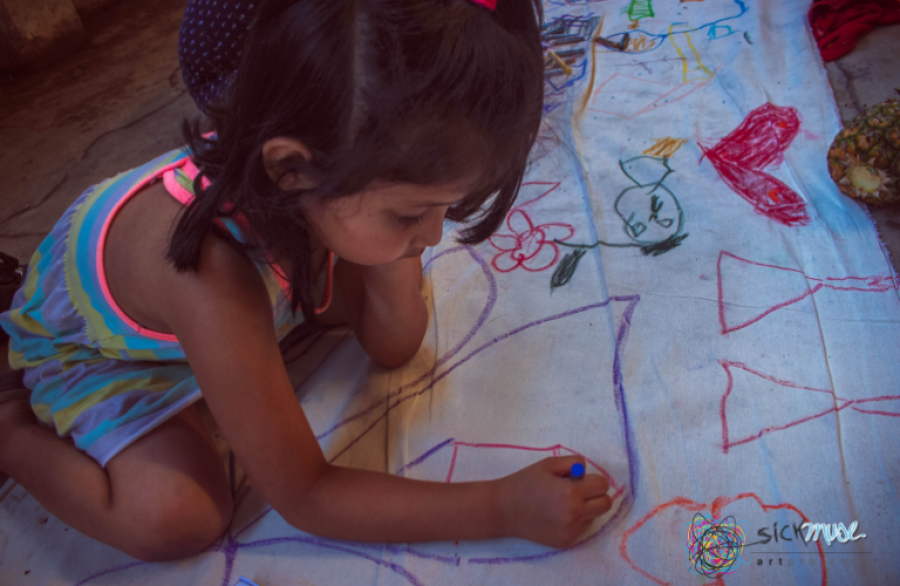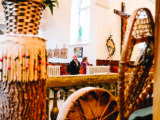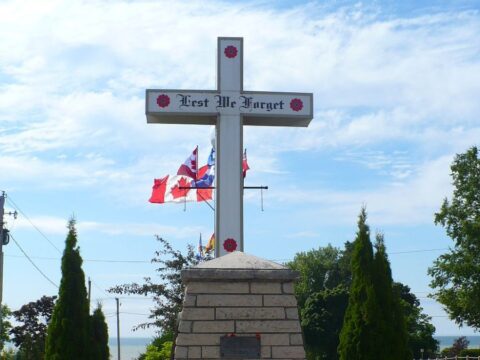In early November, Paola Gomez, program director and co-founder of Toronto’s Sick Muse Art Projects,travelled to Mexico with several volunteers, everyone paying their own way, to help kids journeying to the United States as asylum seekers escaping violence and extreme poverty in Honduras, Guatemala and El Salvador.
Sick Muse is a community arts collective that works with newcomer and refugee children and women. They hold programs like art classes in temporary refugee welcome centres and writing workshops. As someone who came to Canada in 2004 as a refugee from Colombia, Gomez knows what it’s like to be judged and underestimated, and wants to show that these newcomers have much to contribute to Canadian society.
You may unsubscribe from any of our newsletters at any time.
She had a similar goal when she went to Mexico: Use art to help change hateful, fear-filled narratives about the people walking in the caravan, and open up a conversation that recognizes their humanity first. So, they got the children to draw on huge banners to show the world who they are: Kids just like those who live in North America.
Gomez and her colleagues also brought close to a hundred letters written in Spanish that contained messages of strength and hope to deliver to women and teenagers walking in the caravan.
Here, Gomez talks about what she saw in the state of Veracruz, Mexico, on her four-day trip.

Q: Why did you travel to the caravan?
A: What was important to me, in addition to the artistic action, was to also be a witness. The information received in the media is extremely curated, and it is to feed a specific narrative.
We also need to recognize that someone is responsible for what is happening, but beyond that we need to stop stigmatizing these human beings that are walking not because they want to, but because they are forced to. And how do I know that? Because I’m a refugee myself, so I know what it is to not have another alternative but to leave.
And these kids did not choose to be going through this struggle, so the thinking was, how can we create a space for them to create, to be kids, to dream and to imagine?
Q: Can you describe what you saw and experienced when you met up with the caravan?
A: We met the caravan at 4 a.m. on Saturday in [Sayula de Alemán], and they were all lined up waiting for buses that the governor of Veracruz had promised. [There were] probably 4,000 people. Extremely long lines. At five in the morning, the rumour started that the governor wasn’t going to bring the buses. At that point, I was afraid. I’m like “OK, thousands of people being fully disappointed at five in the morning when it’s still very, very dark, when kids are crying and people are suffering. I think this is going to turn bad.” At probably 5:30, someone from an organization of groups supporting migrants stood up with a small megaphone. She started saying that the governor had broken the promise. There wasn’t any violent behaviour. What I saw were so many faces of disappointment, sadness and confusion.
People started walking in different directions. Most of the women that were walking with kids were absolutely confused. They were asking us for advice about which way they should go. That honestly broke my heart, because I realized that the level of organization was very poor, but also that these walkers were waiting for a miracle. There was a point at which it’s like “OK, this is so painful to see. We need to try to do something, especially because all of these kids were crying.” So, someone from my team went and got a bus that is usually for 40 people. And we started a line for women with small kids, and we fit probably 70 people in that bus. That was nothing. You know? That’s nothing.
So when we arrived at the next town, which was Isla, what I realized is that there was a community of care. Many members of the community immediately started arriving with clothing, with fruit. There was a whole truck of pineapple, so everybody was eating pineapple from the very moment we arrived. And then there were a good amount of city services. There were doctors. There were a lot of things going on for them, a lot of support. I realized that we’re only receiving one part of the message in terms of what we see on social media and in the mainstream media.
Q: When did you do the artwork?
A: We got to Isla at around 9 a.m. By 1 p.m. many people had arrived, and I think we started doing the art around 2 p.m.
They arrived very tired, so they immediately placed plastic on the floor, and they lay down there and they rested or they fell asleep. So, we set up our canvas there and invited kids one by one: “Do you want to come and draw?” So, they started, very shyly, but they started arriving and drawing, and they started laughing. Mothers started to join as well. And we realized that the things that they were drawing the most were houses and buses. Of course, we’re not psychoanalyzing anything because we are creating a space for creativity, and to comfort them and come and use colours and dream. But it wasn’t so difficult to figure out what they were doing there. Families holding hands. Houses. Trucks and buses. And this little girl, probably eight years old, she started writing things like, “I love Honduras,” “I miss my home,” “I will see you one day.” We continued encouraging, and the kids started being very animated about what they were doing, and very proud.
Q: As a refugee yourself, what was the impact of this experience on you?
A: I’m pretty sure that my experience as a refugee, my experience as a mother who crossed a border with a kid, influenced my immediate decision to go. Because what I was not noticing in all in the news was the kids and the women. I know that good people and people with big dreams are forced to leave their places of origin. And so to receive from government and from communities all of this hate and negativity was very painful because I wonder what would happen if the ones that were walking were the rich people.
So, when I look at this, I also realize how privileged I am. The fact that I didn’t have to walk the thousands of miles from Colombia to Canada, because I had the possibility of buying an airplane ticket or of having a visa to the U.S. Not forgetting where I’m coming from makes me realize that it’s important to be socially and civically responsible. And I need to do something about it and say, “Hey, stop your hate. This is what really is happening. Nobody is coming to steal anything from any of you.” Because the same as me, many will come and do great things. What is your fear?
Q: What other questions should we be asking?
A: Why is it that the poorest and the most vulnerable are the ones that get attacked with no compassion and with no care at all? Where in all this is the questioning of what is happening in Honduras to make this happen? We’re focusing on these people, demonizing them, making them look like they are bringing all of these bad things, when those who are responsible, meaning big companies and politicians, aren’t being held accountable. Big companies also includes Canadian companies. Who’s talking about the role of Canada in this conversation? I’ve been told a hundred times I shouldn’t be talking this way because I should be grateful that Canada opened its doors to me. But, hey, I’m as Canadian as it can get. I have the right to say my country, Canada, needs to step up. It needs to hold itself accountable for the damage that people in this land have also done to these people in the south.
This interview has been condensed and edited.














